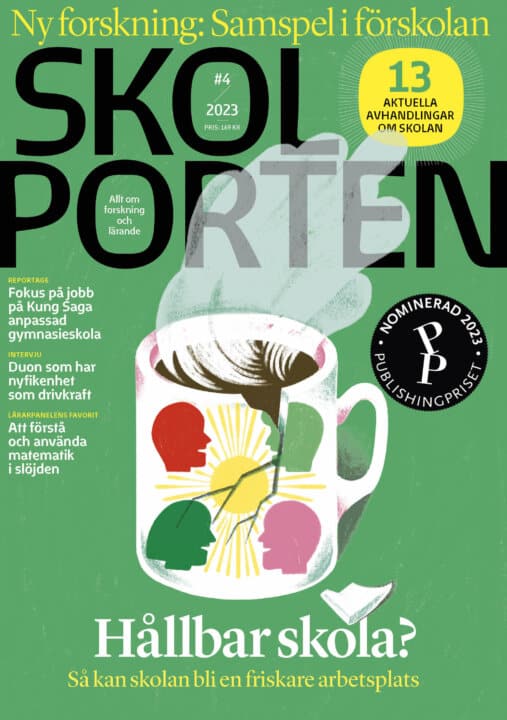Hate crime victimisation: consequences and interpretations
Mika Andersson har forskat om studenters upplevelser av hatbrott. Avhandlingen bidrar till att vidga definitionen av hatbrott genom att kön är med som en kategori.
Mika Andersson
Caroline Mellgren, Malmö universitet Anna-Karin Ivert, Malmö universitet Marie Torstensson Levander, Malmö unviersitet
David Brax Göteborgs universitet
Malmö universitet
2018-01-08
Hate crime victimisation: consequences and interpretations
Hate crime victimisation: consequences and interpretations
The field of hate crime studies is a young one and as such it is characterized by a high proportion of explorative and inductive studies. This methodological approach is well founded when a field is unfolding as they often generate theoretical conclusions or assumptions. Since I began working with the present dissertation in 2013, I have observed an increased tendency towards deductive studies testing the conclusions and assumptions made by field pioneers. The present dissertation is part of this branch and has two primary aims; 1) to test field assumptions and 2) develop present theoretical frameworks on causes and consequences of hate crime. In Article 1, me and my co-author examine the assumption that hate crime victimization result in higher levels of fear in comparison to non-bias crime. The assumption is tested by comparing fear of crime, behavioral adaptations and place-based worry among students with an immigrant and/or national minority background. The results show that hate crime victims reported significantly higher levels of fear of crime in comparison to non-victims and non-bias victims. However, there were few significant differences in behavioral adaptations and place-based worry. From interviews with hate crime victims we learned that place-based worry is not primarily associated with the physical characteristics of a certain area, but geographical concentrations of racist attitudes. Moreover, the behavioral adaptations that the interview participants used to avoid future victimization were often based upon de-identification. From these results we can conclude that traditional measures of place-based worry and behavioral adaptations does not adequately capture consequences of hate crime. In Article 2, me and my co-authors examine the assumption that police reporting is lower among victims of hate crime that target more than one of their identity categories. Contrarily to the assumption, we find that victims of hate crime with multiple motives report their experiences to the police to a higher extent in comparison to victims of hate crime with single motives. We also found that participants with several intersecting group identities endowed with stigma were more likely to be targets of hate crime with multiple motives, but not more likely to experience repeat victimization. These results support the branch of intersectional theory holding that group belongings primarily influence the expressions of violence rather than the risk of being subjected to violence. In Article 3, me and my co-authors examine the assumption that hate targets the identity of the victim and thereby attack the core of the victim’s self. We found that hate crime targets a negative stereotype associated with the perceived identity of the victim. Consequently, interview participants did not regard hate crime as a direct attack on their selves as they did not identify with the negative stereotype. However, hate crime remain a violation of the self as it denies the victims self-representation. The results also showed that the meaning-making regarding hate crime victimization is reflexive as the participants used earlier experiences when assigning meaning to incidents. This process was also recursive as new incidents lead to re-interpretations of previous experiences. In sum, the participants developed and negotiated their experiences of hate crime over time. In Article 4, me and my co-authors examine the assumption that vicarious victims respond in similar ways as direct victims since hate crime signal the presence of threat beyond the initial victim, sometimes referred to as the in terrorem effect. We examine the in terrorem effect by comparing fear of crime between non-victims, vicarious victims of hate crime, and direct victims of hate crime in three communities; women, Muslims and sexual minorities. The results showed that direct victims were generally more afraid of crime in comparison to non-victims in all communities. Though not all differences were significant, the reaction pattern among non-victims, vicarious victims and direct victims in the studies commu-nities showed the pattern of a stair, with the lowest rates among non-victims and the highest rates among direct victims. These results thereby contradict the proposed pattern of the in terrorem effect in which vicarious victims and direct victims are held to react in similar ways. In sum, the results of the present dissertation call for a more complex understanding of both individual and community effects of hate crime. The theoretical development and integration in Chapter 3 along with the results of Articles 1-4 results in hypotheses for future research on causes and consequences of hate crime in Chapter 6.
Relaterade länkar

Biologi
 Åk 7–Vux
Åk 7–Vux Hållbar utveckling i förskolan
 Fsk
Fsk 




